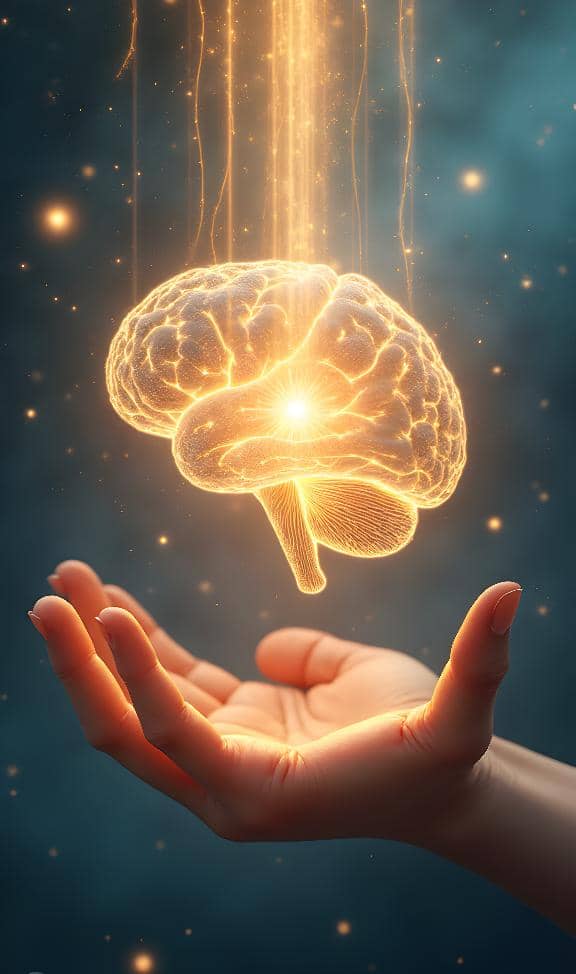In this series, I aim to demystify modern spirituality, demonstrating that ancient understandings of the human condition are not exclusive to the ‘enlightened.’ Instead, they provide an intelligent and effective way of living for everyone when understood and integrated properly.
Mindfulness is everywhere now — in leadership books, wellness apps, productivity hacks. And yet, for many of us, it’s become just another thing to get right.
We treat it like a test:
- Did I do it for long enough?
- Was I focused enough?
- Did I clear my mind properly?
And if the answer is no, we quietly give up — adding it to the pile of things we “should” be doing, but aren’t.
But mindfulness was never meant to be a performance. Or a full-time commitment. Or something reserved for people with an hour to spare and a calm mountain retreat.
At its core, mindfulness is about focus — noticing where you are and what’s actually happening. It doesn’t ask you to pause your life. It invites you to live it with a little more awareness.

Yes, there are many who will disagree — and it’s fantastic if you have five hours a day to dedicate to the practice — but for most of us, the power of mindfulness comes from adding just a little of its quiet magic into daily life, starting small, noticing the difference, and letting the habit grow from there.
You don’t have to change your life to practise mindfulness. You don’t need a perfect morning routine or a candlelit meditation space. You just need to understand what it is — and what it isn’t.
Not Spiritual — Scientific
Mindfulness is not a wellness trend — it’s a cognitive skill.
Defined as the ability to maintain moment-to-moment awareness without judgment, mindfulness has been shown through fMRI studies to strengthen areas of the brain responsible for attention, emotional regulation, and executive function.
It activates the prefrontal cortex, calms the amygdala (the brain’s threat detector), and supports neuroplasticity — the brain’s ability to rewire itself.
In short: mindfulness isn’t about relaxation. It’s about training attention — a measurable mental function with direct impact on how you think, decide, and act.
The Earliest Known Version of Mindfulness
The earliest known version of mindfulness is most directly traced to early Buddhist teachings, dating back to around the 5th–6th century BCE in what is now India and Nepal.
Here’s a concise breakdown:
- Tradition: Early Buddhism
- Term: Sati (Pali) — often translated as “mindfulness,” but more accurately means “to remember” or “to hold in mind”
- Source Text: The Satipaṭṭhāna Sutta (Foundations of Mindfulness), part of the Pali Canon — a key text in Theravāda Buddhism
- Purpose: Not to feel calm, but to gain insight into the nature of reality, reduce suffering, and break free from automatic reactivity
- Practice: Observing the breath, bodily sensations, feelings, thoughts, and mental states with clear awareness and non-attachment
This wasn’t about self-care or productivity. It was about liberation from suffering by observing the mind as it is — without judgment, distraction, or distortion.
Common Misconceptions About Mindfulness
1: Mindfulness means clearing your mind.
Reality:
Your mind isn’t broken for having thoughts. That’s its job.
Mindfulness isn’t about stopping thoughts — it’s about not chasing every single one of them. You notice what’s happening internally without getting dragged around by it.
2: You have to sit still and meditate for hours.
Reality:
Mindfulness doesn’t live on a cushion. It can be practised while washing dishes, walking, drinking tea, or having a conversation.
Stillness is useful, but presence is the point — and you can find that anywhere.
3: It’s only for calm, spiritual people.
Reality:
Mindfulness was designed for real life, not retreats.
You don’t need to be calm to start — you start so you can deal better with the chaos. It’s for stressed-out parents, overwhelmed creatives, busy entrepreneurs — anyone with a brain.
4: Mindfulness makes you passive or detached.
Reality:
This isn’t about floating through life. It’s about being more engaged, not less.
Mindfulness helps you respond instead of react — and that’s what gives you power, especially under pressure.
5: If you’re doing it right, you’ll feel peaceful.
Reality:
Sometimes mindfulness feels boring, uncomfortable, or awkward. That’s normal.
You’re learning to stay with what’s real — not escape it. The benefit builds over time, not instantly.
Practical Applications: How to Incorporate Mindfulness into Daily Life
1. Mindfulness While Drinking Your Morning Coffee or Tea
Instead of scrolling or mentally rushing through your to-do list, give yourself 60 seconds to actually experience your drink.
Notice the temperature. The smell. The first sip.
You’re not trying to think about nothing — you’re just choosing to pay attention on purpose.
2. Mindfulness While Brushing Your Teeth
Sounds mundane — and that’s the point.
Let it be a ritual, not a rush. Feel the water. The bristles. Notice your posture.
This gives your mind a moment to reset before the day ramps up.
3. Mindfulness in Conversations
Instead of planning what to say next, just listen.
Watch how fast your mind tries to jump in — and gently bring it back to what the other person is actually saying.
This builds presence and connection. Two birds, one breath.
4. Mindfulness During Transitions
Waiting for the kettle to boil. Sitting in traffic. Walking between meetings.
Use these gaps as cues to check in: What’s happening in my body right now? What’s the quality of my thoughts?
It takes 20 seconds — and it trains your brain to pause instead of powering through.
5. Mindfulness with Technology
Before you unlock your phone, ask: Why am I picking this up? What am I looking for?
This 3-second pause is mindfulness in action — and it can completely shift how you use tech, rather than letting it use you.
6. Mindfulness at the End of the Day
As you lie down, run through your day without judgment.
Notice moments you were present. Moments you checked out.
This isn’t about scoring points — it’s about building awareness, which is how change actually happens.
Conclusion
The power of mindfulness isn’t found in grand gestures or perfect routines.
It’s found in the ordinary, repeated moments — brushing your teeth, pausing at a red light, listening without interrupting.
This isn’t something you master once and for all. It’s something you return to. Again and again. If and when you love it you can then increase the time until maybe one day you too are sitting crossed legged for hours!
Start small. Stay curious.
Because the quality of your attention shapes the quality of your life — and mindfulness is simply the art of paying attention, on purpose, in the life you’re already living.
Further Reading/Resources
Mindfulness: A Practical Guide to Finding Peace in a Frantic World




